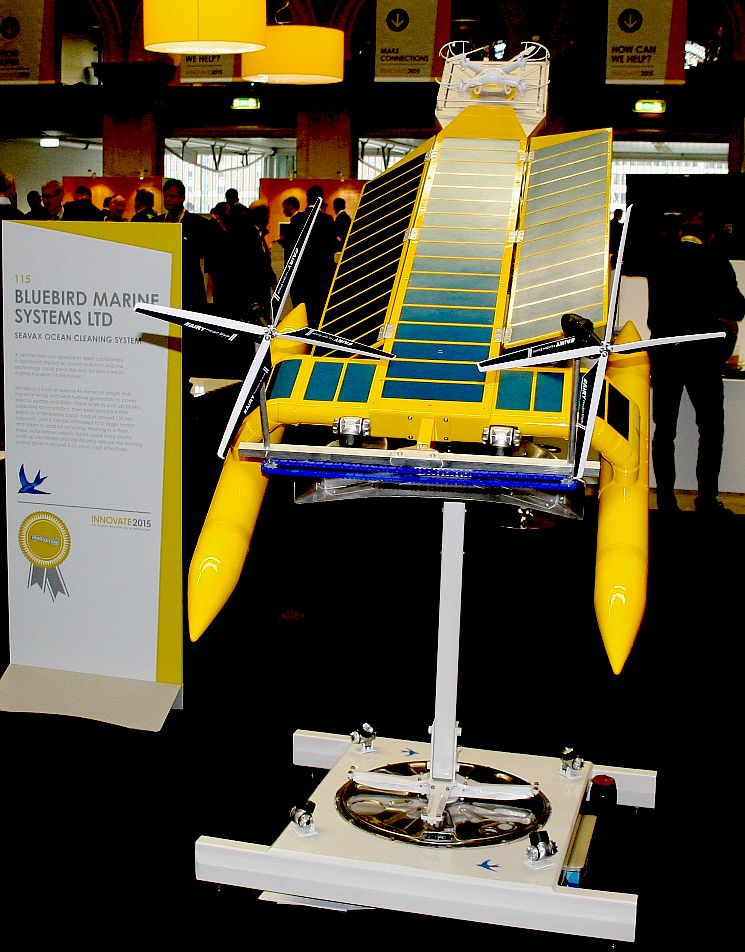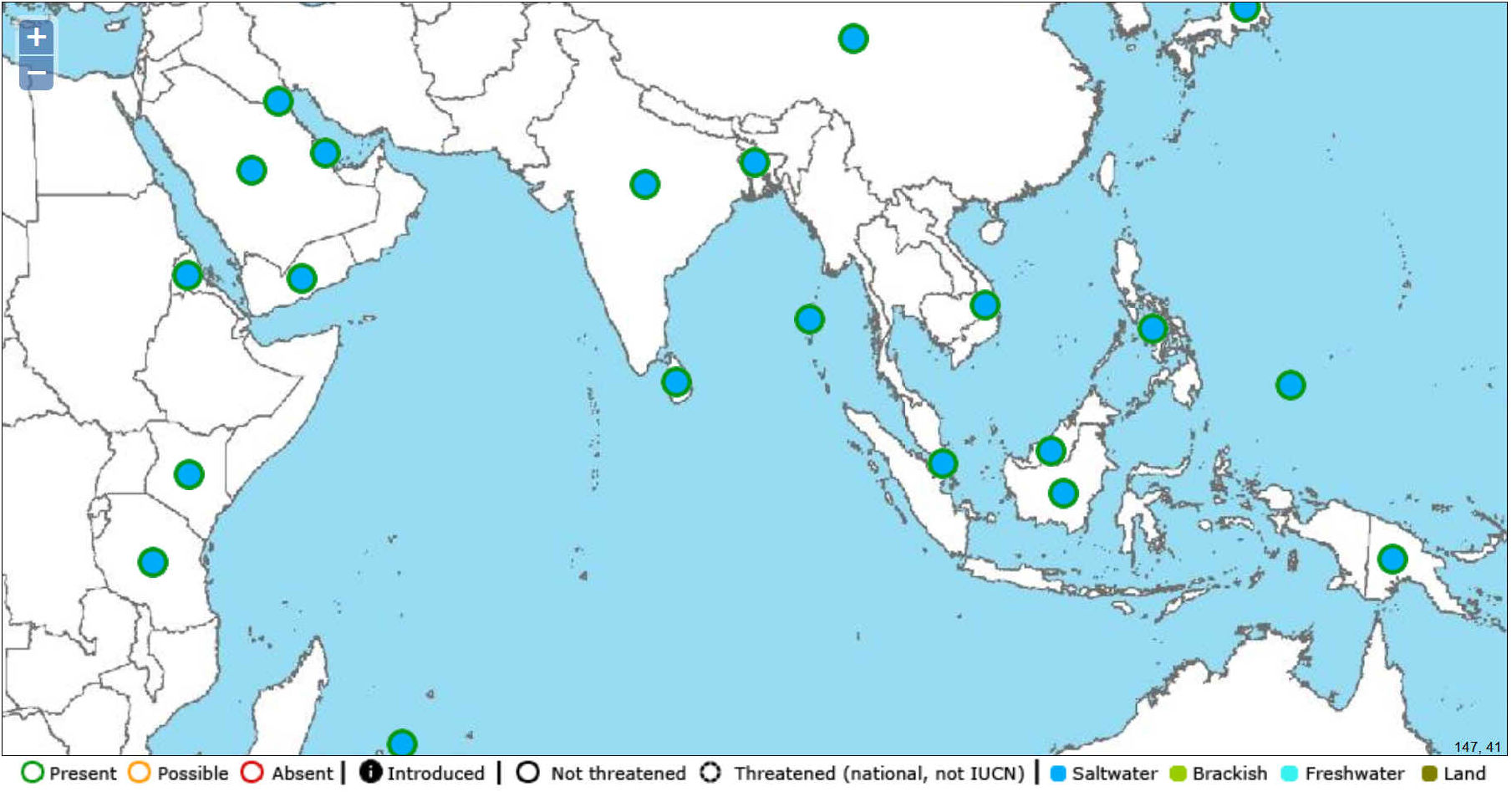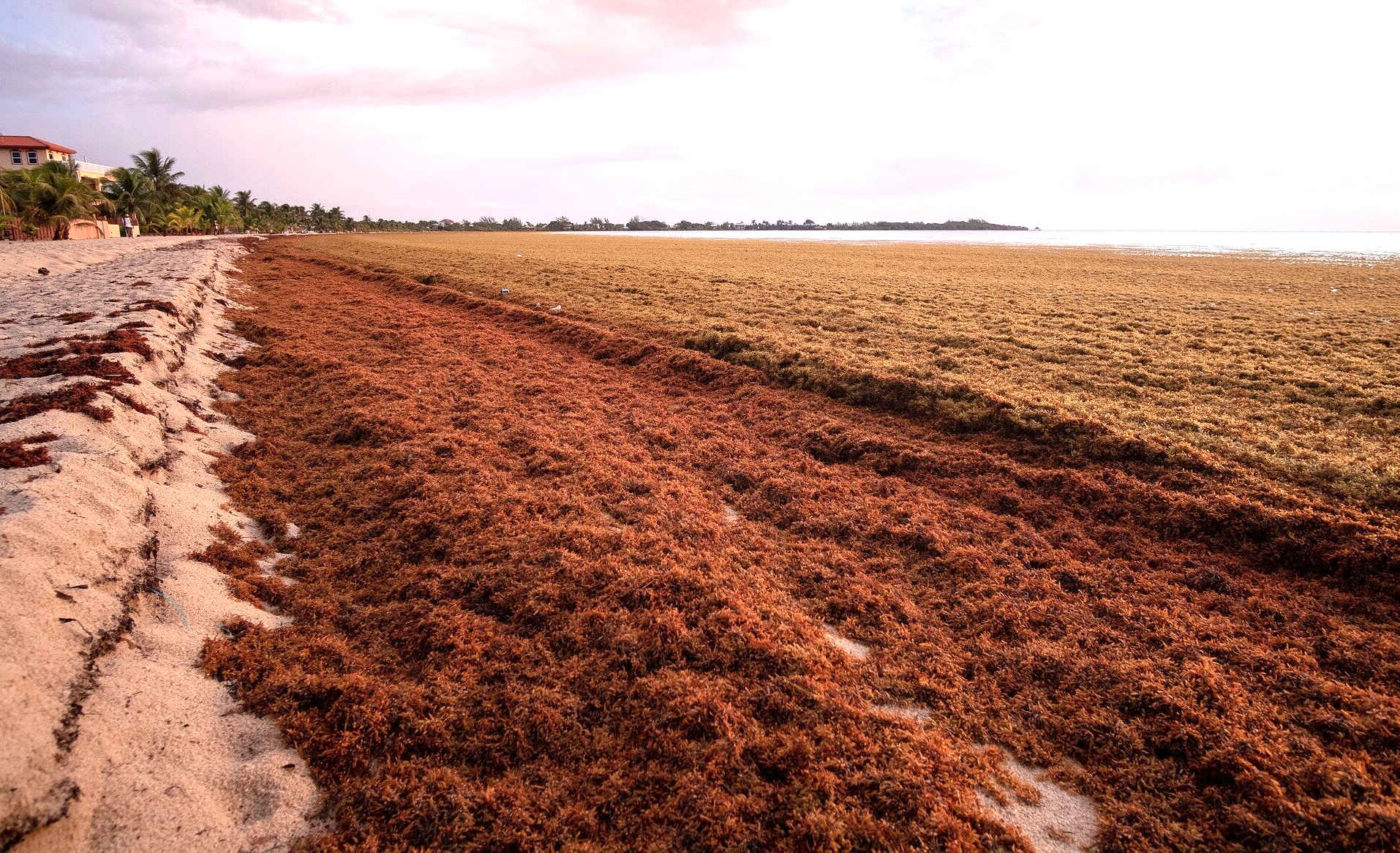|
SEAVAX-SARGASSO ™ SEAVAX-CALYPSO ™ SEANET ™
CLIMATE/ACID NEUTRAL, COST EFFECTIVE SARGASSUM CLEANING WORKBOATS
Please use our A to Z INDEX to navigate this site or return HOME
|
|
|
SEAVAX™ TRIALS - Cost effective pollution monitoring and cleaning all in one. You have to think big to clean a sea or ocean. Anything less is a waste of time. It's pointless trying to clean up a huge body of moving water with a teaspoon - you need to cost any system from collection to disposal, include recycling - wherever that is practical - if you are to stand any chance of achieving a Global Circular Economy, where climate warming is changing ocean chemistry for the foreseeable future. Coastal towns and islanders looking to set up a cooperative to deal with their emergencies and crisis situations - for long term peace of mind - may want to explore the potential of SeaVax or other custom built vehicles with similar capacities, capable of utilizing the 'Sargassum Early Advisory System' (SEAS) and other satellite trackers.
SEAVAX ADAPTATION TO GENERAL PURPOSE WATER CLEANING WORKBOATS
The SeaVax concept can be adapted to clean river waste as a RiverVax variation, or more to the point, a dedicated sargassum harvester. We will be writing more about this subject as we look deeper into the problems being faced by countries bordering the Gulf of Mexico and islands in the Caribbean Sea, and define how this vessel may become a useful tool in the global arsenal against pollution. To date everyone has been looking for a free lunch, using volunteers. But those times are long gone. Potential customers are now looking for custom solutions, and seeking Expressions of Interest from contractors/developers, such as that issued by the Government of Antigua and Barbuda (Department of the Environment) in July 2018.
COST EXAMPLE: After the 2018 sargassum surge, occupancy rates at Riviera Maya hotels declined by 2.87 percent. That same year, hotels between Cancún and Puerto Morelos to the south spent around $200,000 (£146,000) 'each' on wages for beach clean-up personnel and transporting seaweed to ecologically unsound disposal sites. Many hotels used specialized removal boats, which can cost up to a million dollars (U.S.), and for offshore sargassum barriers that run $100 (£70) per linear foot.
In light of the forecast increase in blooms, we believe there could be a good business case for keeping beaches clear of noxious seaweeds, and turning harvests of macro algae into cash crops, turning a crisis into an opportunity:
FERTILIZERS - FOODS - MEDICINES - MINERALS - PACKAGING - SUPPLEMENTS - VITAMINS
SARGASSUM COOPERATIVE EXPRESSIONS OF INTEREST: The "Sargassum Cooperative CIC" is a proposed consortium of affected Governments, the aim of such group being to develop a cost-effective system for the sustainable, proactive removal and long-term management of pelagic Sargassum seaweed in the Mexican Gulf and Caribbean Sea - and specifically, for sharing the development and operational costs of specialized harvesting and handling equipment. Thus meeting the economic and environmental needs of these geographical regions, in relation to the present crisis, and future emergency situations.
The "Cooperative" would first assess the potential for cost saving by adding up the beneficiaries and dividing the "System CAPEX" by the number of islands and commercial beachfront properties, then dividing the estimated CAPEX by the number of participants, on a sliding scale, based on population and/or tourist statistics. This will give those looking at ways of containing overheads, a way to asses the benefits/negatives of group membership - and importantly, negotiate equitable terms.
Please contact the Cleaner Ocean Foundation with your interest.
FUNDING ENVIRONMENTAL STRATEGIC ACTION SARGASSUM WHITE PAPER - TURNING A CRISIS INTO AN OPPORTUNITY
INNOVATION 2015 - Full size SeaVax™ machines will be capable of extracting floating sargassum from the seas and oceans, potentially turning the tide on the emergency situations facing many bordering the Caribbean Sea, or African west coast. We hope to interest those affected by the seaweed crisis in the prospect of forming cooperative partnerships for zero carbon cleaning projects. Subject to contract and appropriate levels of funding.
PROPOSED SEAVAX (CALYPSO & SARGASSO) TARGET SPECIFICATIONS 2023
TARGET CALYPSO™ SPECIFICATIONS (SARGASSUM) 2023:
* 100 tons (@340-500kg/M3 variable) before discharge to a designated beach location or dock area, via support vehicle if necessary. * Climate neutral - Solar and Hydrogen powered to eliminate NOx and CO emissions for sustainability. * Cost effective in the long term - with a break even point against diesel (-) and seaweed (+). * Width = 5 metres x Length = 15 metres (16 x 48ft) including survey drone. * Height from sea to deck = 4.0 metres (13ft). * Hydrogen storage tanks = TBA. * Fuel cell and reformers = TBA. * Featuring a sizeable fixed width 4.0 meter (13ft) collection head and multiple treatment stages. * Featuring moveable sweeps to increase the apparent width of the collector head to 12.0 meters.
ORIGINAL (SEAVAX) and (RIVERVAX) TARGET SPECIFICATIONS (PLASTIC) 2016
ORIGINAL SEAVAX™ SPECIFICATIONS (PLASTIC) 2016:
* 150 tons before discharge to a land location by docking. * Climate neutral - Solar and Wind powered to eliminate NOx and CO emissions for sustainability. * Cost effective in the long term - with a break even point for plastic recyclers. * Width = 17 metres x Length = 45 metres (55 x 147.5ft) including drone landing pad. * Height from sea to deck = 4.3 metres (14ft). * Turbine width = 20.4 (66ft) from turbine (port) tip to (starboard) tip. * Variable turbine height with fold down to get under bridges. * Featuring a giant 13.5 meter (44ft) collection head and multiple treatment stages.
ORIGINAL TARGET RIVERVAX™ SPECIFICATIONS (PLASTIC) 2016:
* 20 tons before discharge to a riverbank site, dedicated support vehicle or designated dock area. * Climate neutral - Solar and Wind powered to eliminate NOx and CO emissions for sustainability. * Cost effective in the long term - with a break even point against other river skimmers. * Width = 5 metres x Length = 11 metres (16 x 36ft) including a smaller drone landing pad. * Height from river to deck = 2.5 metres (8ft). * Turbine width = 6.4 (34ft) from turbine (port) tip to (starboard) tip. * Variable turbine height with fold down to get under bridges. * Tidal generator to take advantage of river currents to harvest free energy. * Featuring a sizeable fixed width 3.0 meter (10ft) collection head and multiple treatment stages. * Featuring moveable sweeps to increase the apparent width of the collector head.
We will no longer be using wind turbines, favoring solar power and green hydrogen derived fuels, working in combination.
INDIAN OCEAN EQUATORIAL BELT - It is only a theory, that hopefully may never and will never come to pass. But all such projections are worth considering as to potential. The equatorial ocean areas could suffer a similar fate to the Atlantic, should weather and currents change, linked to nutrients from fertilizer run-off, as agriculture rushes to secure food for growing populations, amid dwindling fish stocks from over-fishing. Also, potentially linked to carcinogenic micro plastic ingestion.
MIXING IT UP - It has been hypothesized that the Sargassum cycles occurring on the Texas gulf coast are linked with the Atlantic Multidecadal Oscillation temperature variations (Webster, 2013). From the appearance of Sargassum entering the system via the Caribbean Passages smaller patterns emerge and suggest that other variables are influencing different cycles and fluctuations based on their location and strength.
Due to Sargassum resting in the first meter of the water column, the two main forces that affect it are ocean currents and atmospheric drivers. The effects of the ocean currents are more apparent because they are well mapped and tend to be static in location, direction, and intensity. With no freeboard, the physical structure rests below the water line, one would expect Sargassum to have little response to atmospheric conditions; however, the initiation of Sargassum migration is thought to be most closely correlated with the Azores High Pressure System (Frazier, 2013).
The North Atlantic Ocillation (NAO) was considered to be the “missing piece” in explaining Sargassum’s migratory loop (Webster et. al, 2013). Despite Sargassum’s lack of freeboard the initiation of the Sargassum migration is most closely related with the Azores High Pressure System. The high pressure climatic phenomenon generates southbound winds over the Sargasso Sea, which are referred to as “anticyclonic winds”. These anticyclonic winds may cause a migration of the Sargassum into the lower latitudes (Frazier et. al, 2015).
Winds force mats of Sargassum via Langmuir cells of alternating convergence and
divergence which transport flotsam and jetsam approximately parallel to the direction of the wind. This pushes the Sargassum into lower latitudes where they are affected by the welldefined Caribbean currents (Xu, 1997). Once in the Caribbean the anticyclonic winds of the Azores High assist the Caribbean current and Gulf of Mexico loop current in carrying the Sargassum through the Yucatan Strait and into the Gulf of Mexico.
AFFECTED CARIBBEAN ISLANDS BY POPULATION
Cuba 11,252,999 Haiti 11,263,077
(Hispaniola) Roatán 110,000 Tortuga 25,936
EQUATORIAL LOCATIONS AT POSSIBLE RISK
Even with the best political winds, global warming may not reverse for 30-50 years at best, as governments leisurely transition to renewables. Meaning that the conditions for sargassum to populate welcoming equatorial waters around the globe, remains a distinct possibility. Such as the:
Atlantic - North & South Equatorial Banda Ceram Molucca & Timor Seas Pacific Ocean - North & South, Equatorial Belt (Costa Rica, Ecuador, Panama regions)
Seas and oceans in these latitudes could become inundated with macro algae, if the rafts of floating seaweed manage to navigate less hospitable barriers, and nutrients from more intensive farming - to feed the billions - find their way into fatter equatorial belts.
ACIDIFICATION - ADRIATIC - ARCTIC - ATLANTIC - BALTIC - BAY BENGAL - BERING - CARIBBEAN - CORAL - EAST CHINA ENGLISH CH - GOC - GULF GUINEA - GULF MEXICO - INDIAN - IOC - IONIAN - IRC - MEDITERRANEAN - NORTH SEA - PACIFIC - PERSIAN GULF - SEA JAPAN STH
CHINA - PLASTIC
- PLANKTON - PLASTIC
OCEANS - SARGASSO - SEA
LEVEL RISE - UNCLOS
- UNEP
WOC
- WWF
Youtube
|
|
|
Copyright © 2022 Caribbean Sargassum (Crisis) Community Interest Company
|


